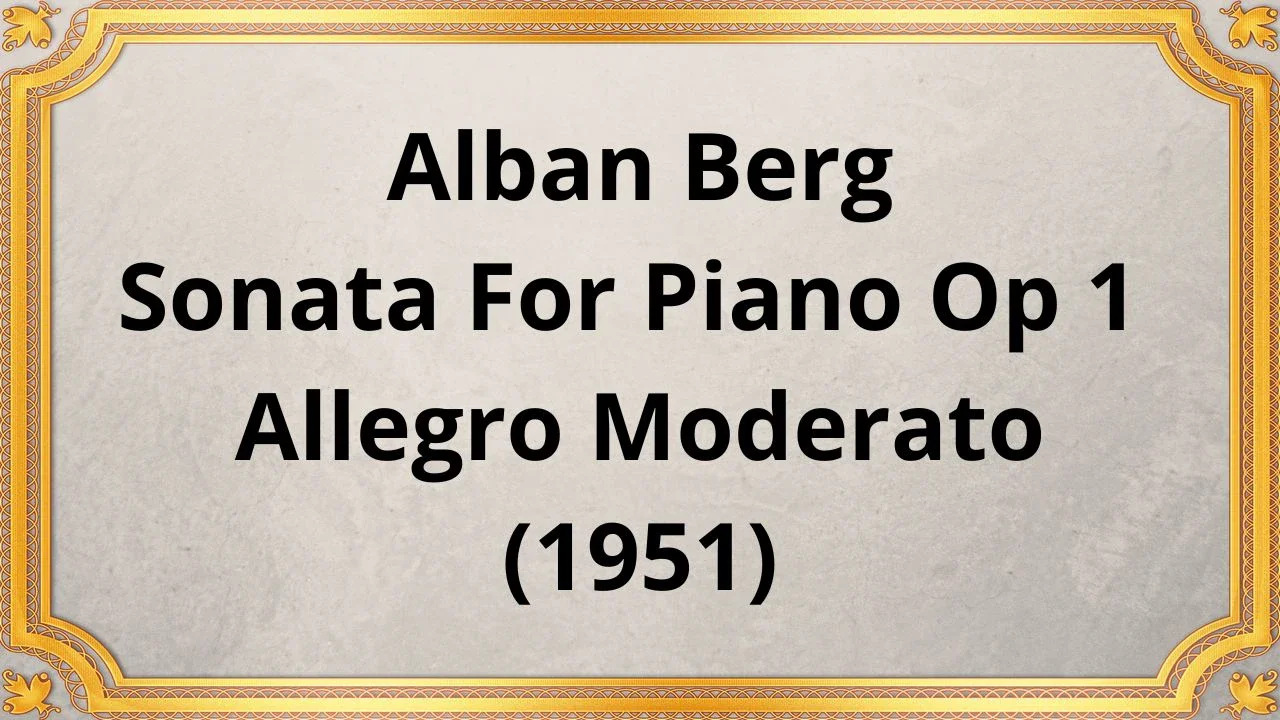Alban Berg Sonata For Piano Op. 1 Allegro Moderato
#ClassicalMusic #AlbanBerg #SonataForPianoOp1 #ExpressionistMusic #20thCenturyComposition #AustrianComposer #TwelveToneTechnique
#MusicalStructure #AtonalMusic #VienneseSchool
Publication date 1951
ZADEL SKOLOVSKY PIANO
Alban Berg's Sonata for Piano, Op. 1, is a seminal composition in the realm of classical music. Written in the early 20th century, this piano sonata showcases the innovative and expressive qualities of the Austrian composer.
Composed in 1908, Sonata for Piano, Op. 1, emerged during a period of artistic exploration and experimentation in Vienna. Berg, along with his contemporaries Arnold Schoenberg and Anton Webern, formed the Viennese School and were pioneers in the development of atonal and twelve-tone music. This composition marked the beginning of Berg's compositional journey and his exploration of expressionist music.
Berg's Sonata for Piano adheres to a traditional three-movement structure, with each movement presenting distinct musical ideas and emotions. The first movement, marked "Mäßig bewegt" (moderately agitated), exhibits a sense of urgency and tension. The second movement, "Langsam" (slow), contrasts with a somber and introspective atmosphere. Finally, the third movement, "Sehr rasch" (very fast), brings the sonata to a fiery and intense conclusion.
One of the most striking aspects of Sonata for Piano, Op. 1, is its expressive intensity. Berg masterfully utilizes dissonant harmonies and unconventional melodic lines to convey a wide range of emotions, from anguish and despair to moments of tenderness and hope. The sonata's emotional depth invites listeners into a world of introspection and introspective reflection.
Berg's Sonata for Piano showcases his embrace of atonality, a departure from the traditional tonal system. The piece is characterized by the absence of a clear tonal center, with the music moving freely between different harmonic regions. Additionally, Berg incorporates elements of the twelve-tone technique, a method of organizing pitch material that ensures each of the twelve pitches of the chromatic scale are used in a specific order. This technique adds further complexity and richness to the sonata's harmonic language.
Sonata for Piano, Op. 1, serves as a testament to Berg's innovative approach to composition and his contributions to the development of expressionist music. His exploration of atonality and twelve-tone techniques had a profound impact on the evolution of classical music in the 20th century. Berg's sonata paved the way for future composers to explore new musical avenues and pushed the boundaries of what was considered acceptable within the classical tradition.
Alban Berg's Sonata for Piano, Op. 1, stands as a significant composition that showcases the composer's expressive and innovative spirit. With its emotional intensity, atonal language, and incorporation of twelve-tone techniques, the sonata represents a turning point in the development of expressionist music. Berg's ability to convey profound emotions through his music invites listeners to explore the depths of human experience. Sonata for Piano, Op. 1, remains a powerful and influential work that continues to captivate and inspire audiences to this day.
You have the opportunity to support the channel:
https://destream.net/live/RadSiarAl/donatehttps://www.buymeacoffee.com/6355radsiaral